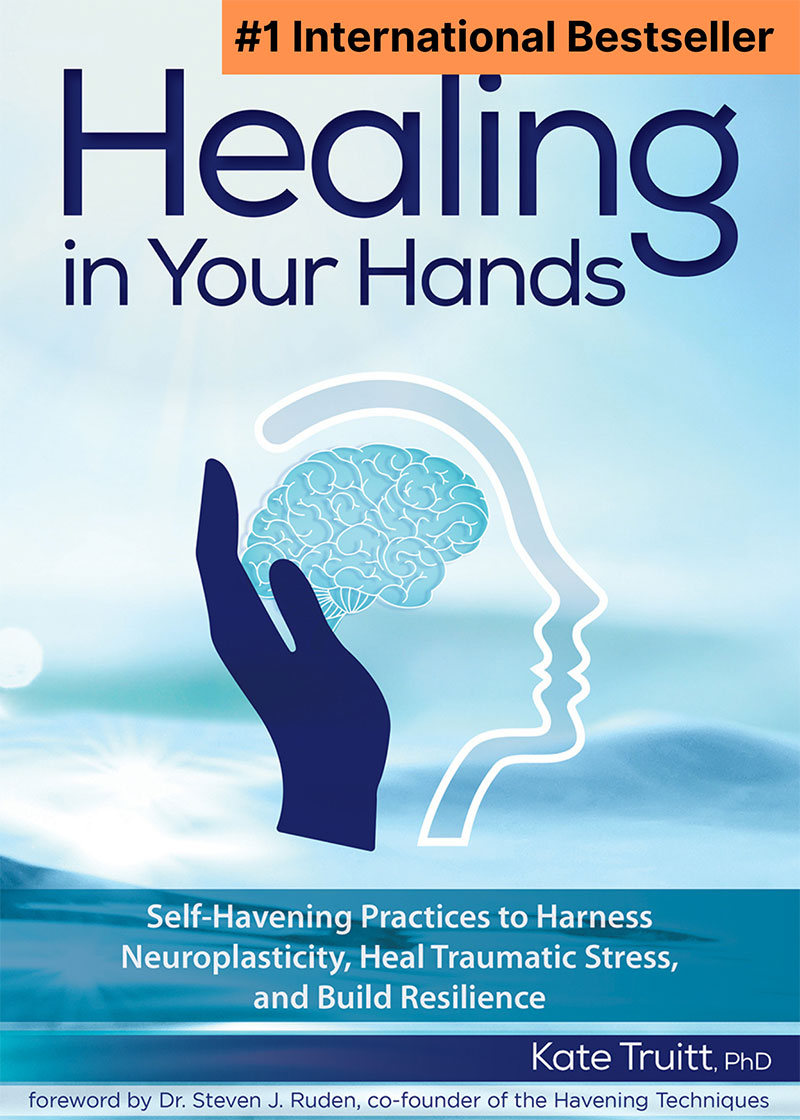What Are the Latest Trends in Mental Health and Trauma Treatment
By Dr. Kate Truitt
As the field of mental health continues to evolve, several emerging trends are shaping the way we approach trauma treatment and overall psychological well-being. These trends reflect advancements in neuroscience, innovative therapeutic techniques, and a growing emphasis on holistic, resilience-focused care. Let’s dive into the latest industry trends that are transforming mental health practices.
Neuroplasticity and Self-Healing
One of the most exciting developments in mental health is the increasing focus on neuroplasticity – the brain’s ability to reorganize itself by forming new neural connections throughout life. This concept underscores many contemporary therapeutic techniques aimed at harnessing the brain’s inherent capacity for healing.
Self-havening, for example, uses gentle touch to activate neuroplasticity, helping individuals process and release traumatic stress. This method involves using gentle touch on specific areas of the body, such as the arms, face, and hands, to activate neuroplasticity and facilitate the processing and release of traumatic stress. The touch helps to create a sense of safety and calm, which is crucial for enabling the brain to reorganize itself. By integrating attention, imagination, and positive emotional states, Self-Havening helps individuals rewire their neural pathways, reducing the impact of past traumas and enhancing overall resilience. This technique is part of a broader movement toward empowering individuals to take an active role in their healing processes using scientifically backed, self-applied methods called the Havening Techniques®. In my book Healing in Your Hands , you will find powerful client stories, insights from the field of neuroscience, and tools to create a complete and holistic self-healing program that you can use.

Traditionally, mental health treatment has often been seen as something that happens in the therapist’s office, with the therapist as the primary agent of change. However, the focus on neuroplasticity and self-applied methods shifts some of that power back to the individuals themselves, allowing them to engage in self-healing practices that they can use anytime and anywhere. In this psychoeducational video , you will learn more about self-havening and how to use it to decrease stress and anxiety while building your resilient brain. If you’re a clinician who wants to elevate your practice with neuroscience-based healing modalities, register for our upcoming Havening Techniques Online Training with Certification Option.
Integrative and Holistic Approaches
Mental health professionals are increasingly adopting integrative approaches that consider the mind-body connection. This holistic perspective recognizes that emotional and physical health are deeply intertwined. Techniques such as mindfulness, yoga, and somatic therapies are becoming standard practices within therapeutic settings. These approaches aim to create a balanced and resilient nervous system, allowing individuals to better cope with stress and trauma.
The mind-body connection refers to the complex interactions between our thoughts, emotions, and physical health. Scientific research has increasingly shown that mental health issues can manifest as physical symptoms and vice versa. For example, chronic stress can lead to conditions such as hypertension, digestive issues, and weakened immune function, while physical ailments can contribute to feelings of anxiety and depression. I talk about this in my YouTube video about Chronic Pain: Understanding Physical Pain and Feelings. Recognizing and addressing these interconnected aspects is crucial for comprehensive mental health care.
Trauma-Informed Care
Over the years, I have dedicated my practice to advancing trauma treatment and promoting resilience, and one of the most significant shifts I have observed in the mental health field is the growing recognition of the importance of trauma-informed care. This approach fundamentally changes how we understand, recognize, and respond to trauma, emphasizing safety, empowerment, and a profound understanding of trauma’s pervasive impact.
There is a growing recognition of the importance of trauma-informed care across all sectors of mental health services. This approach involves understanding, recognizing, and responding to the effects of all types of trauma. It emphasizes physical, psychological, and emotional safety for both providers and survivors and helps rebuild a sense of control and empowerment. Trauma-informed care is not just a set of practices but a shift in how care is delivered, ensuring that all interactions are grounded in an understanding of trauma’s impact.
Trauma-informed care is a framework that acknowledges the widespread prevalence and profound impact of trauma on individuals. Trauma can result from a range of experiences, including physical or emotional abuse, neglect, natural disasters, and systemic issues like racism and poverty.
Adopting a trauma-informed approach in mental health services transforms how care is delivered. It shifts the focus from “What is wrong with you?” to “What happened to you?” This fundamental change in perspective helps reduce the re-traumatization of clients, a common issue in traditional mental health settings where the focus is often on diagnosing and treating symptoms without understanding the underlying trauma.
To learn more, I encourage you to read my previous blog: Trauma-Informed Care: What It Is, Why It Matters, And How Havening Techniques Can Be Integrated . I also touched on this important topic on an intimate conversation with Dr. Arielle Schwartz.
Digital and Telehealth Innovations
The COVID-19 pandemic brought unprecedented challenges to the field of mental health care, but it also accelerated the adoption of telehealth, which has remained a crucial component of mental health services. This shift towards digital platforms and teletherapy has made mental health care more accessible and adaptable, breaking down geographical barriers and providing crucial support to those who may not have had access otherwise.

Telehealth, or the delivery of health care services through digital communication technologies, was already gaining traction before the pandemic. However, the necessity for social distancing and lockdowns during the COVID-19 crisis propelled its rapid expansion. Mental health professionals quickly adapted to provide therapy and support through video calls, phone consultations, and online messaging.
In addition to teletherapy, mental health apps have seen a significant rise in popularity. These apps offer a range of resources, including guided meditations, cognitive behavioral therapy (CBT) exercises, and mood tracking, providing users with tools to manage their mental health on their own terms.
Benefits of Digital Mental Health Solutions
The integration of telehealth and mental health apps into mainstream mental health care has brought numerous benefits:
- Increased Reach: Digital platforms can reach a wider audience, including those who may not have access to traditional in-person therapy due to location, physical limitations, or scheduling conflicts.
- Cost-Effectiveness: Teletherapy and mental health apps often offer more affordable options compared to traditional therapy, making mental health care more accessible to those with financial constraints.
- Flexibility: Digital mental health solutions offer flexibility in terms of timing and frequency. Clients can schedule sessions at times that are most convenient for them and access self-help resources whenever they need them.
- Personalized Care: Many apps use data analytics and machine learning to provide personalized recommendations and feedback, enhancing the effectiveness of self-help interventions.
Challenges and Considerations
While the rise of telehealth and digital mental health solutions has been transformative, there are also challenges and considerations to keep in mind:
- Digital Divide: Not everyone has access to reliable internet or digital devices, which can limit the reach of telehealth services and mental health apps. Efforts must be made to bridge this digital divide and ensure equitable access to care.
- Privacy and Security: Ensuring the privacy and security of client data is paramount. Mental health professionals and app developers must adhere to stringent data protection regulations to safeguard sensitive information.
- Quality of Care: While teletherapy and apps offer convenience, it is essential to ensure that the quality of care remains high. Mental health professionals must receive appropriate training to deliver effective telehealth services and apps should be developed based on evidence-based practices.
Emphasis on Resilience
The field of positive psychology, which focuses on strengths and virtues that enable individuals and communities to thrive, is influencing mental health practices. There is a growing emphasis on resilience-building as a preventive measure against mental health issues. Techniques that promote resilience include fostering strong social connections, developing a growth mindset, and practicing self-compassion.
Empowerment is another cornerstone of trauma-informed care. Trauma often leaves individuals feeling powerless and disconnected from their sense of self. By fostering an environment of trust and collaboration, mental health professionals can help clients regain control over their lives and build resilience. This approach empowers individuals to become active participants in their healing journey, promoting lasting change and recovery. If you’re a clinician of therapist, check out our upcoming and on-demand training programs for all mental health professionals.
Advancements in Neurofeedback and Biofeedback
Neurofeedback and biofeedback are gaining traction as effective tools for managing stress, anxiety, and other mental health conditions. These techniques involve training individuals to control physiological functions by providing real-time feedback from monitoring devices. By learning to regulate brainwave patterns or other bodily functions, individuals can improve their mental health and overall well-being.
Neurofeedback is a type of biofeedback that focuses specifically on brainwave activity. It involves monitoring brainwaves using electroencephalography (EEG) and providing real-time feedback to help individuals learn how to regulate their brain activity. This technique is based on the principle of neuroplasticity, the brain’s ability to reorganize itself by forming new neural connections. By reinforcing positive brainwave patterns and discouraging maladaptive ones, neurofeedback can help alleviate symptoms of various mental health conditions.
Biofeedback, on the other hand, is a broader term that encompasses various techniques for controlling physiological functions. This can include heart rate, muscle tension, skin temperature, and breathing patterns. By using sensors and monitoring devices to provide feedback on these physiological functions, individuals can learn to make conscious changes to their body’s responses, promoting relaxation and reducing stress.
Conclusion
The landscape of mental health and trauma treatment is rapidly evolving, driven by advancements in neuroscience, technology, and a holistic understanding of well-being. By integrating these latest trends into practice, mental health professionals can offer more effective, personalized, and empowering care to those in need. As we continue to explore and embrace these innovations, the future of mental health care looks promising, with the potential to transform lives and promote lasting resilience.
References:
- Halo Mental Health. (2024). 7 mental health trends to watch in 2024. Retrieved from https://halomentalhealth.com/mental-health-trends/
- TheShareCo Content Team. (2024). What are the latest trends of trauma and PTSD counselling? Retrieved from https://www.theshareco.org/what-are-the-latest-trends-of-trauma-and-ptsd-counselling/
- National Institute of Mental Health. (n.d.). Technology and the future of mental health treatment. Retrieved from https://www.nimh.nih.gov/health/topics/technology-and-the-future-of-mental-health-treatment




















